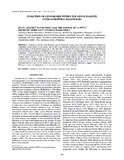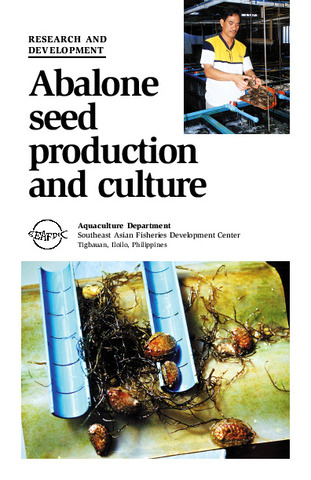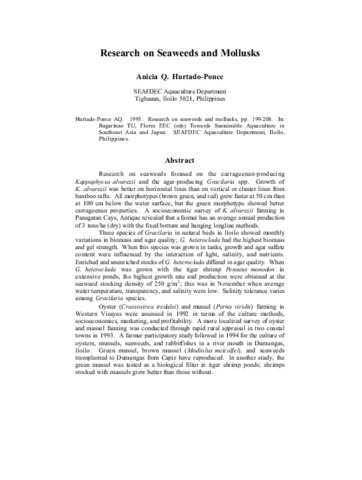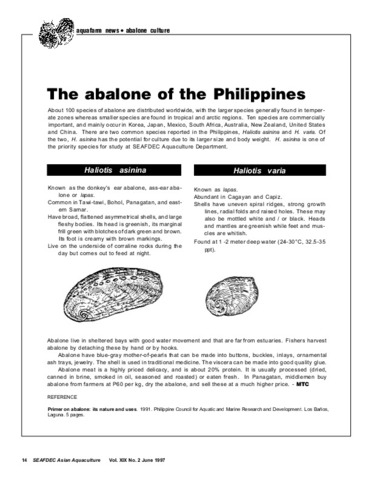Evolution of genome size within the genus Haliotis (Vetigastropoda: Haliotidae)
- Global styles
- MLA
- Vancouver
- Elsevier - Harvard
- APA
- Help

View/
Date
2018Page views
1,564ASFA keyword
AGROVOC keyword
Taxonomic term
Metadata
Show full item record
Share
Abstract
Genome size (C-value) and the percentage of adenine and thymine nucleotides in the genome (AT content) are fundamental characteristics of every species, and very important parameters in molecular cytogenetic and phylogenic studies, and for the progress of whole-genome sequencing. In this study, the C-value and AT content of nine abalone species inhabiting the Northwest Pacific (around Japan), Southeast Asia, South Africa, and Oceania were determined using flow cytometry. C-value ranged from 1.32 pg for Haliotis varia (Southeast Asia) to 2.01 pg for Haliotis laevigata (Oceania), and AT content ranged from 58.0% for Haliotis planata (Southeast Asia) to 66.3% for Haliotis diversicolor aquatilis (Southeast Asia). Reported chromosome numbers ranged from 2n = 32 to 36, and were higher in Oceanian, South African, and Northwest Pacific species (2n = 36) compared with the Southeast Asian group (2n = 32). This increase of chromosome number in the Oceanian species seems to be related to an increase in the DNA amount, unlike that of Haliotis midae (South African species). An increase of the C-value associated with an increase in DNA amount was also shown in the North Pacific group. These results suggest that increases in the DNA amount occurred independently in the ancestor of each of the different lineages.
Suggested Citation
Adachi, K., Arai, K., de la Peña, M. R., Moriyama, S., & Okumura, S.-I. (2018). Evolution of genome size within the genus Haliotis (Vetigastropoda: Haliotidae). Journal of Shellfish Research , 37(5), 1067-1072. https://doi.org/10.2983/035.037.0518
Type
ArticleISSN
0730-8000; 1943-6319Collections
- Journal Articles [1258]
Related items
Showing items related by title, author, creator and subject.
-
Abalone seed production and culture
Unknown author (Aquaculture Department, Southeast Asian Fisheries Development Center, 2000)Details the research conducted at AQD for the tropical abalone Haliotis asinina. AQD has developed the rudiments of a hatchery protocol. -
Research on seaweeds and mollusks
Hurtado-Ponce, Anicia Q. (Aquaculture Department, Southeast Asian Fisheries Development Center, 1995)Research on seaweeds focused on the carrageenan-producing Kappaphycus alvarezii and the agar-producing Gracilaria spp. Growth of K. alvarezii was better on horizontal lines than on vertical or cluster lines from bamboo ... -
The abalone of the Philippines
Castaños, Milagros T. (Aquaculture Department, Southeast Asian Fisheries Development Center, 1997)





